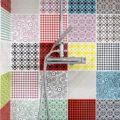Forgetting your smartphone in your pocket and looking around is the advice to discover street art that, despite its evolution, has never abandoned the walls of cities. A phenomenon increasingly courted by museums and galleries and more or less legally recognized by public or private institutions. In statistical terms, it is difficult to quantify exactly the number of active artists or the volume of works produced, given the often anonymous and transitory nature of graffiti.

Geometric shapes and abstract figures, floral designs, lettering and comics, bright or pastel colours, each artist with his own style and technique sends messages of protest and denunciation or of social commitment or of unbridled imagination.

Between old school writers and the new generation of graffiti artists, these artists redevelop abandoned buildings and forgotten areas, suburbs or uninhabited villages; they decorate old and new concrete buildings from Milan to New York, passing through the provinces of Italy and beyond.

“A wall is for painting, a Saturday night is for partying, and life is for celebrating,” said Keith Haring. Artists like Keith Haring used public spaces, such as New York subway stations, to create works that addressed social and political issues. Haring is known for his stylized, two-dimensional figures, which represent equality and the fight against social marginalization. Another influential artist of the “old school” was Jean-Michel Basquiat, who combined elements of graffiti with figurative and conceptual art.

Graffiti, also known as “writing”, is a form of urban art that originated in the United States in the late 1960s. Initially, in Philadelphia, young artists began to leave their signatures, or “tags”, on the walls and trains of the city. This phenomenon then spread to New York in the 1970s, where it reached stylistic maturity in the mid-1980s, one of the pioneers of this movement was TAKI 183. In Europe, graffiti found fertile ground in France thanks to pioneers such as Blek le Rat, considered the father of stencil art, and Jef Aérosol.

In Italy, urban art has gained European notoriety since the early 2000s, with the emergence of schools in Milan, Bologna, and Rome. Artists such as Blu, Ozmo, and the collective Orticanoodles have helped define the landscape of Italian street art, participating in festivals and projects that have transformed spaces into real open-air galleries.

The world of graffiti and street art is a super creative universe: aerosol art is the most iconic and used technique. Stencil art or wheatpaste is perfect for strong and immediate messages. Muralism is a classic technique that resembles fresco, while 3D installations and urban sculptures that use physical materials are much more modern. Among the most interesting techniques are reverse graffiti: a dirty surface is “cleaned” using silhouettes and allowing the design to emerge. The growing integration of street art confirms the constant increase in its popularity and its recognition worldwide.

The AbanoRitz has always been a hotel in curious and continuous search for new balances such as the artistic one between important antiques and frescoes torn to the large paintings that pay homage to writing techniques, thanks to artists such as Alessio B, Biz, Toni Gallo and Kenny Random who is an urban artist known for his poetic and mysterious murals. His art mixes dreamlike elements, fairy-tale characters and pop quotes, creating worlds suspended between reality and fantasy.









Leave a Reply